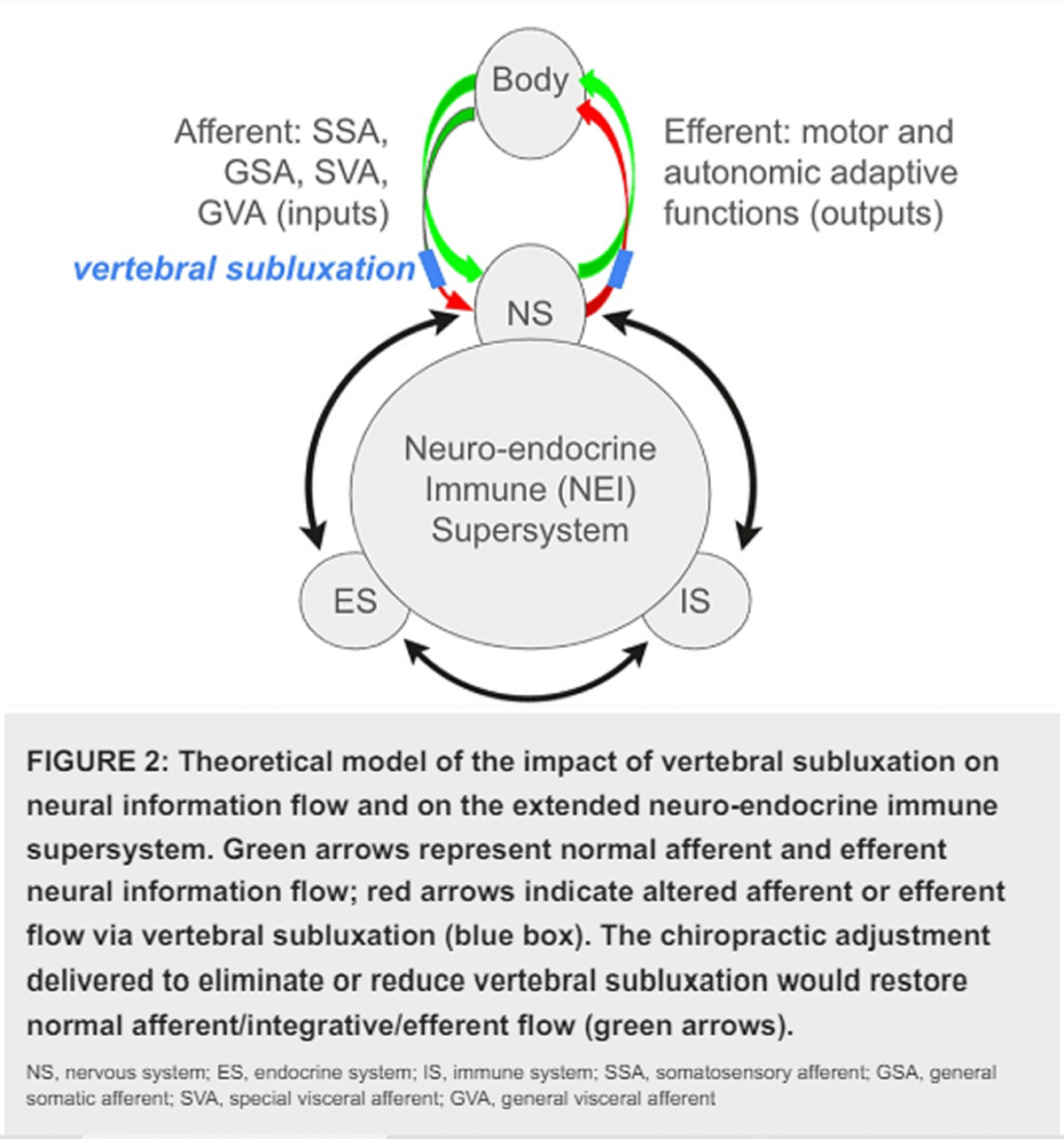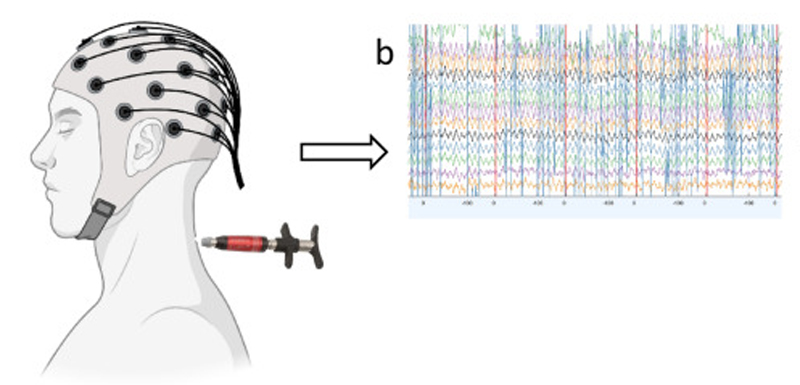Alteration of Motion Segment Integrity
SOURCE: Dynamic Chiropractic
By Jeffrey Cronk, DC, CICE
Sometimes the internal discourse that is common in our profession seems to get in the way of our acceptance of real help so that we can expand our profession and better serve our patients. Alteration of motion segment integrity (AOMSI) is a significant gift from the AMA that allows us to methodically locate, substantiate and objectively prove the severity of the spinal subluxation. Of course, it comes as a gift only as long as we handle it with a high level of responsibility.
Alteration of motion segment integrity is determined by exact mensuration procedure published in the AMA Guides to the Evaluation of Permanent Impairment. It is a spinal subluxation that can be objectively identified with a high degree of accuracy, especially when one acknowledges the advancements that have occurred in assessment of stress imaging (X-ray, DMX).
Please remember that some of the most significant advancements in functional radiology assessment came from information gained from our profession’s very first federal research grant, awarded in the mid 1970s. It was University of Colorado scientist Chung Ha Suh, PhD, who secured the first chiropractic funding from the National Institutes of Health (NS 12226 01A1). Suh’s main areas of research focused on the development of computerized, kinematic models of the spine and three-dimensional, distortion-free X-ray analysis. This research improved our ability to more accurately measure articular deformations such as AOMSI.
You may also want to review:
Accurate Prognosis in Personal-Injury Cases Using George’s Line
Historically, AOMSI first showed up in writing in June 1993, when the AMA developed the injury model of spinal assessment and listed the findings and criteria in its new DRE (Diagnosis Related Estimate) categories. This was the first open acknowledgment from the AMA that spinal subluxation’s could cause significant, and perhaps permanent, reductions in a patient’s health status. This meant that the AMA had validated what we had been stating for a very long time. Ironically, this validation came some six years after the resolution of the Wilk case.
Some in our profession understood this “open acknowledgement” for what it really was and made sure AOMSI was included in the first chiropractic practice guidelines to be published in the federal government’s National Guideline Clearinghouse Project (NGC). They had the foresight to make sure, with strong peer review, that AOMSI was within the scope of chiropractic management and listed as a component of the vertebral (spinal) subluxation complex. [1] These guidelines were first published in 1998 and have had two successful and very helpful revisions, still listed in the NGC today.
Read the rest of this Full Text article now!





[…] This post was mentioned on Twitter by Drs. Miller said: Alteration of Motion Segment Integrity: Source: Dynamic Chiropractic ~ 11-18-2010 […]
Bear in mind that “AOMSI” refers to a segmental hypermobility (which is not clear from the article above.) It is a intersegmental instability… not necessarily analogous to the hypomobility of the VSC/subluxation.
The “spinal subluxations” referred to are due to damage which compromises the motion segment (and is, at minimum, a yellow flag for manipulation/adjusting of the compromised segment.)
Nick
Most observant!
There’s a recent posting in the Radiology section, titled: “Accurate Prognosis in Personal-Injury Cases Using George’s Line” that discusses in detail HOW to measure that instability (hypermobility) in flexion and extension films.
Dr. Karapasas,
Has an intersting point that the AOMSI is not part of the VSC/Subluxation if I am understanding him correctly. I agree that it is usually not a hypomobility — but we are Chiropractors have to be able to treat both — hypo and hyper. We also have to improve our understanding that we are doing so everyday.
Our Guidelines geared specifially to the VSC have listed the hyper in with the VSC that we treat everyday—here is the citing:
Here is what the CCP Guidelines State on Page 14 of the 2008 version pulished in the National Guideline Clearinghouse http://www.ngc.gov:
The American Medical Association, in its Guides to the Evaluation of Permanent
Impairment, lists the following as acceptable means to rate impairment: 82
• Impairment due to loss of muscle power and motor function,
• impairment due to abnormal motion of the spine,
• impairment due to loss of motion segment integrity,
• impairment due to disc problems,
• impairment due to pain or sensory deficit, and segmental
instability.
The above are, in fact, components of the Vertebral Subluxation Complex.83, 84
http://www.ccp-guidelines.org/guideline-2008.pdf
We also have to look to some of our most repected educators in chiropractic as far as treatment of this aspect of the VSC goes:
This is from wwww.thechiropracticimpactreport.com with Dan Murphy, DC, DABCO:
On July 29, 2010, Malik Slosberg, Dc, MS, published a review article titled (14):
How Spinal Manipulation Activates Segmental
Stabilization of the Spine
Dr. Slosberg is a full professor at Life Chiropractic College West in Hayward, California. In this article, Dr. Slosberg documents the following model of how chiropractic adjusting can improve segmental spinal instability:
Tissue injury and pain results in reflex inhibition and progressive atrophy of the segmental multifidus muscle.
The chiropractic adjustment rapidly stretches ligaments, joint capsules and intervertebral discs, stimulating stretch receptors, and initiating a ligamentomuscular reflex, which activates the segmental multifidus to stabilize and protect passive ligamentous restraints from injury.
The segmental multifidus that has been reflexly inhibited and atrophying is stimulated to contract.
This may reverse the reflex inhibition, progressive atrophy, and delayed muscle response in the segmental multifidus, and restore contractility and improve dynamic joint function.
The key concept from Dr. Slosberg is that chiropractic spinal adjusting can improve spinal segmental instability as a consequence of activating the multifidus muscle.
Dr. Slosberg is one of our most sound educators today. I am particularly grateful that he has taken on a misunderstanding (we do not treat instabilities/hypermobilities) that has plagued our profession for far to long. It never has withstands and clinical or intelectual challenges — yet it has persisted for a long time.
We do however have to be sound in our ART, SCIENCE and APPLICATION of our procedures and those that think they cannot — should not until they have certainty otherwise. I think we can all agree on that.
Agreement provides alignment and alignment provides function and it is fortunate for all that we have a forum such a Chiropractic Resources to build alignment — through this type of interaction.